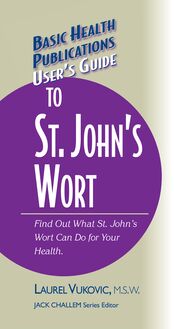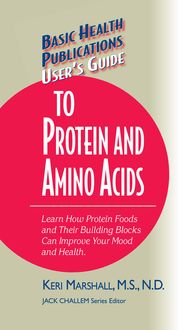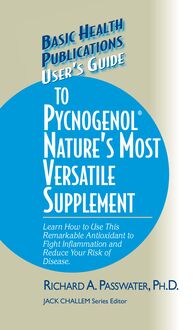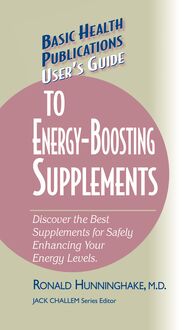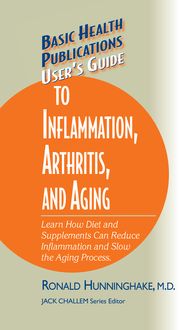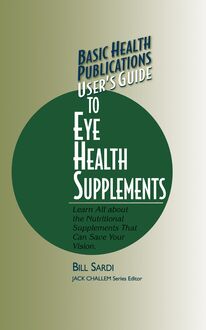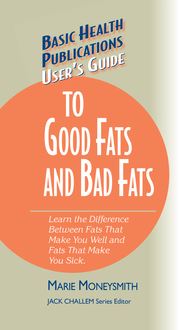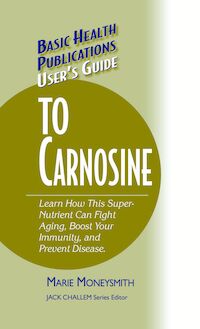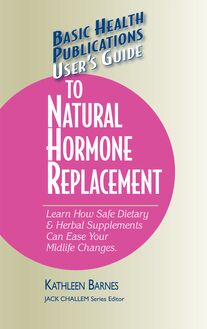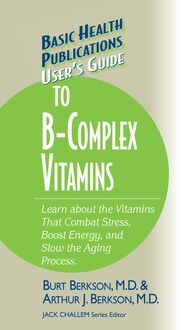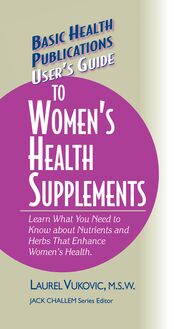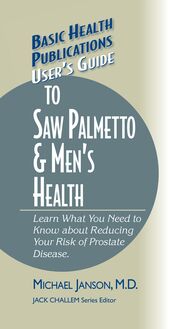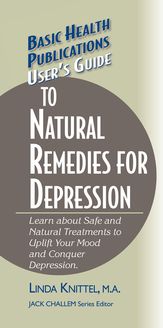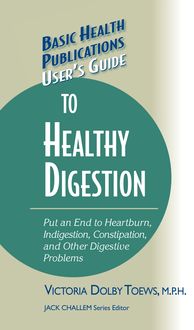User's Guide to Natural & Safe Pain Relief , livre ebook
48
pages
English
Ebooks
2006
Vous pourrez modifier la taille du texte de cet ouvrage
Obtenez un accès à la bibliothèque pour le consulter en ligne En savoir plus
Découvre YouScribe en t'inscrivant gratuitement
Découvre YouScribe en t'inscrivant gratuitement
48
pages
English
Ebooks
2006
Vous pourrez modifier la taille du texte de cet ouvrage
Obtenez un accès à la bibliothèque pour le consulter en ligne En savoir plus
Publié par
Date de parution
01 janvier 2006
Nombre de lectures
0
EAN13
9781591206934
Langue
English
Publié par
Date de parution
01 janvier 2006
Nombre de lectures
0
EAN13
9781591206934
Langue
English
The information contained in this book is based upon the research and personal and professional experiences of the author. It is not intended as a substitute for consulting with your physician or other healthcare provider. Any attempt to diagnose and treat an illness should be done under the direction of a healthcare professional.
The publisher does not advocate the use of any particular healthcare protocol but believes the information in this book should be available to the public. The publisher and author are not responsible for any adverse effects or consequences resulting from the use of the suggestions, preparations, or procedures discussed in this book. Should the reader have any questions concerning the appropriateness of any procedures or preparations mentioned, the author and the publisher strongly suggest consulting a professional healthcare advisor.
Series Editor: Jack Challem
Editor: Kristen Jennings
Typesetter: Gary A. Rosenberg
Series Cover Designer: Mike Stromberg
Basic Health Publications User’s Guides are
published by Basic Health Publications, Inc.
28812 Top of the World Drive
Laguna Beach, CA 92651
949-715-7327 • www.basichealthpub.com
Copyright © 2006 by Kenneth J. Frank, M.D.
ISBN-13: 978-1-59120-693-4
ISBN-10: 1-59120-173-X
All rights reserved. No part of this publication may be reproduced, stored in a retrieval system, or transmitted, in any form or by any means, electronic, mechanical, photocopying, recording, or otherwise, without the prior written consent of the copyright owner.
Printed in the United States of America
10 9 8 7 6 5 4 3 2
C ONTENTS
Introduction
1. What’s Wrong with MainstreamTreatments for Pain
2. Pain, Inflammation, and Today’s Diet
3. Vitamins and Other Nutrients
4. Glucosamine, Chondroitin, and ASU
5. Herbs That Reduce Pain
6. Homeopathic Remedies
Conclusion
Selected References
Other Books and Resources
I NTRODUCTION
I f you have picked up this book, physical pain is probably a bothersome part of your life. Arthritis, muscular aches and pains, joint injury, back pain, and headache are extremely common complaints that could have motivated you to look for answers in this User’s Guide. For some of you, pain may be disabling, preventing you from doing the things you need, enjoy, or want to do in your day-to-day life. Or, you may be looking at this book because someone close to you is in pain and you want to help. In these pages, you will find valuable information that will give you the tools and knowledge you need to reduce your pain—without shouldering the significant risks now known to exist in many of the pharmaceutical drugs normally prescribed for this purpose. You will learn how to use natural medicines—herbs, nutrients, as well as dietary changes—to reduce the impact of pain on your life.
Whatever its form, pain is the primary reason people go to the doctor. Pain Net, Inc. reports that more than 65 million Americans suffer from some form of pain at any given time, and that 90 percent of diseases are associated with pain. Pain costs the United States $100 billion a year in lost productivity, 50 million lost workdays a year, and $3 billion in lost wages a year.
Unfortunately, pain medications carry risks and side effects that range from annoying to life threatening. In 2004, with the withdrawal from the marketplace of the blockbuster pain drug Vioxx (the largest prescription drug withdrawal in history) due to significant increase in heart attack and stroke risk in patients on the drug, the public’s trust in mainstream pain medicines began to wane. The safety of other similar drugs for pain has since been questioned. Although powerful corticosteroid drugs such as prednisone and sedating, addictive drugs like codeine, hydrocodone (Vicodin), and morphine are blessings for those who can’t get relief any other way, they are therapies of last resort for good reason. Side effects—including addiction and major impairment of day-to-day physical and mental functioning—from these medicines can be devastating.
Now for the good news: Natural medicines—herbs, nutrients, and other supplements, dietary changes, and homeopathy—can play a role in controlling and preventing most kinds of pain. The effectiveness of these therapies varies according to the underlying diagnosis and individual response of patients, but overall they work through mechanisms that can help virtually every pain patient and that will provide complete relief for some.
With natural medicine, what helps to heal one symptom almost always is good for many other ailments. For example: Supplements and dietary recommendations that effectively treat osteoarthritis, a degenerative disease, also happen to help prevent most other degenerative diseases such as heart disease, type 2 diabetes, Alzheimer’s and cancer. The same auxiliary benefits are found in natural remedies that reduce inflammation from injury. In short, all roads lead to Rome: the supplements and dietary changes I’ll recommend for pain help prevent or decrease the risk of degenerative diseases as well. They fortify and strengthen the body, enhancing its natural self-healing processes.
One of the most important take-home messages of this book is that your body’s level of inflammation has a lot to do with your likelihood of having to contend with chronic pain. You’ll find out why this is and how stopping inflammation before it gets severe—something you can do with natural therapies—can end pain, too.
Natural approaches for pain work best when diet, supplements, exercise, lifestyle change, homeopathy, and other therapies are used cooperatively to support overall health and boost the body’s ability to strike a balance that reduces pain. If you have severe pain, you may need to use some natural therapies as a complement to drugs prescribed by your medical team. If you have mild, moderate, or occasional pain, natural therapies might be all you require. Any severe or unexplained pain should promptly be evaluated by a physician. It could signify a problem that is serious or life threatening. Then, once you know what you’re dealing with, you can use natural medicines to move toward a pain-free life.
Most of the natural pain relievers described in these pages have been used over millennia, and they rarely cause side effects—when they do, they are mild compared to those caused by drugs. Relief isn’t always guaranteed with them, either, but they frequently work—without hurting you or causing addiction. They can also reduce your requirement for more toxic medicines or surgeries.
Each chapter of this book starts out with a series of simple action steps that will give you the big picture. I then go into more depth about why these steps are helpful and how they relieve pain. At each chapter’s conclusion you’ll find a section entitled “Dr. Frank’s Natural Pain Prescription,” where I sum up the advice in the chapter.
Most mainstream (allopathic) pain-care providers don’t know much about natural pain relief. That is where this book comes in. It is a concise, user-friendly guide to natural therapies for pain. You can become the expert on these therapies and an important part of your own medical care.
CHAPTER 1
W HAT’S W RONGWITH M AINSTREAM T REATMENTS FOR P AIN
A ll of the top ten painful diseases can be treated, at least in part, with natural medicine. Mainstream medical treatments—including the controversial COX-2 inhibitor drugs—hold significant risks. Understanding those risks will motivate you to shift to safer natural therapies.
Some types of pain respond better to natural therapies than others. Osteoarthritis, rheumatoid arthritis, fibromyalgia, athletic strains and sprains, overuse injuries (carpal tunnel and TMJ syndromes), postsurgical pain, headache, migraine, back pain, menstrual pain, and diabetic neuropathy (a potentially painful foot and lower-leg condition usually caused by diabetes) are good candidates for treatment with natural therapies. Most of these conditions are promoted or worsened by modern diets and lifestyles that don’t supply adequate nutrition or physical activity.
What kinds of pain are not likely to be treatable with natural medicine? Pain caused by the following conditions are probably best treated with mainstream methods: Injury to or diseases of the nerves, brain, or spinal cord (for example, central pain syndrome [CPS], polymyositis/dermatomyositis [PM/DM], temporal arteritis, trigeminal neuralgia) Cancer Advanced arthritis or degenerative disk disease Endometriosis Internal adhesions caused by surgery Any pain that has gone beyond bothersome and into excruciating
There is strong evidence that intractable pain is undertreated because of fear of addiction or of being too “drugged.” Don’t let these fears stop you from getting the relief that will keep you comfortable.
Following is a little more detail about the top ten painful diseases treatable with natural therapies.
1. Osteoarthritis
Wear and tear on the joints leads to the deterioration of the soft, springy cartilage that cushions joint spaces. Pain and loss of joint function are the first signs of the damage of osteoarthritis. Inflammation can set in during the advanced stages of the disease, accelerating joint destruction and causing pain.
Nonsteroidal anti-inflammatory drugs (NSAIDs), such as aspirin, ibuprofen, diclofenac, and naproxen, are the first-line medical treatment for osteoarthritis. Besides the cardiovascular and gastrointestinal risks of this drug class, there is an additional concern: Research evidence shows that long-term use of these drugs actually promotes the progression of the disease. How ironic—the very medicine widely used to stop the pain of osteoarthritis can make arthritis worse.
2. Rheumatoid Arthritis
Like osteoarthritis, rheumatoid arthritis affects the joints. But unlike osteoarthritis, it is an autoimmune disease, an illness in which, for reasons not well understood, the immune syst
